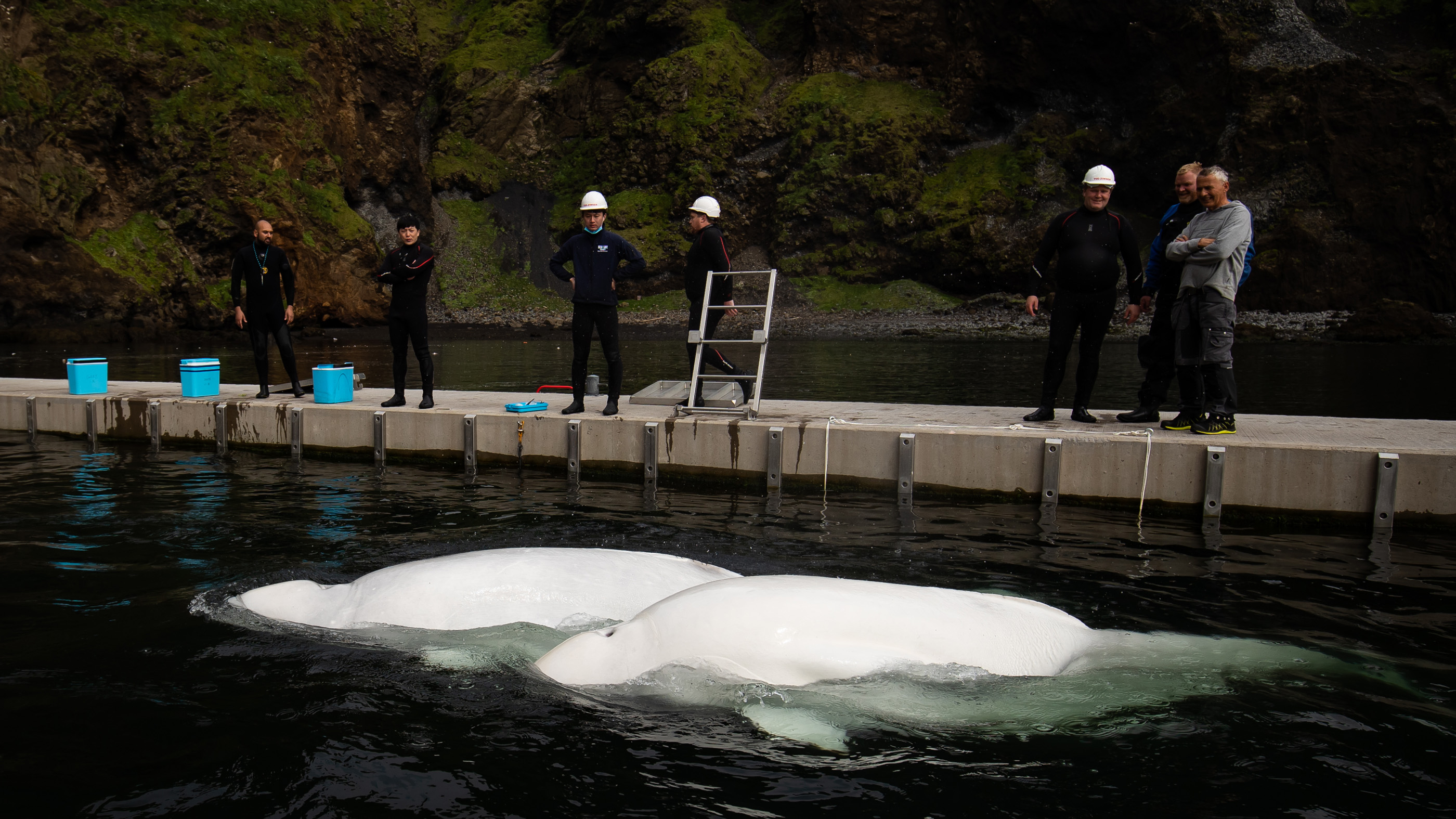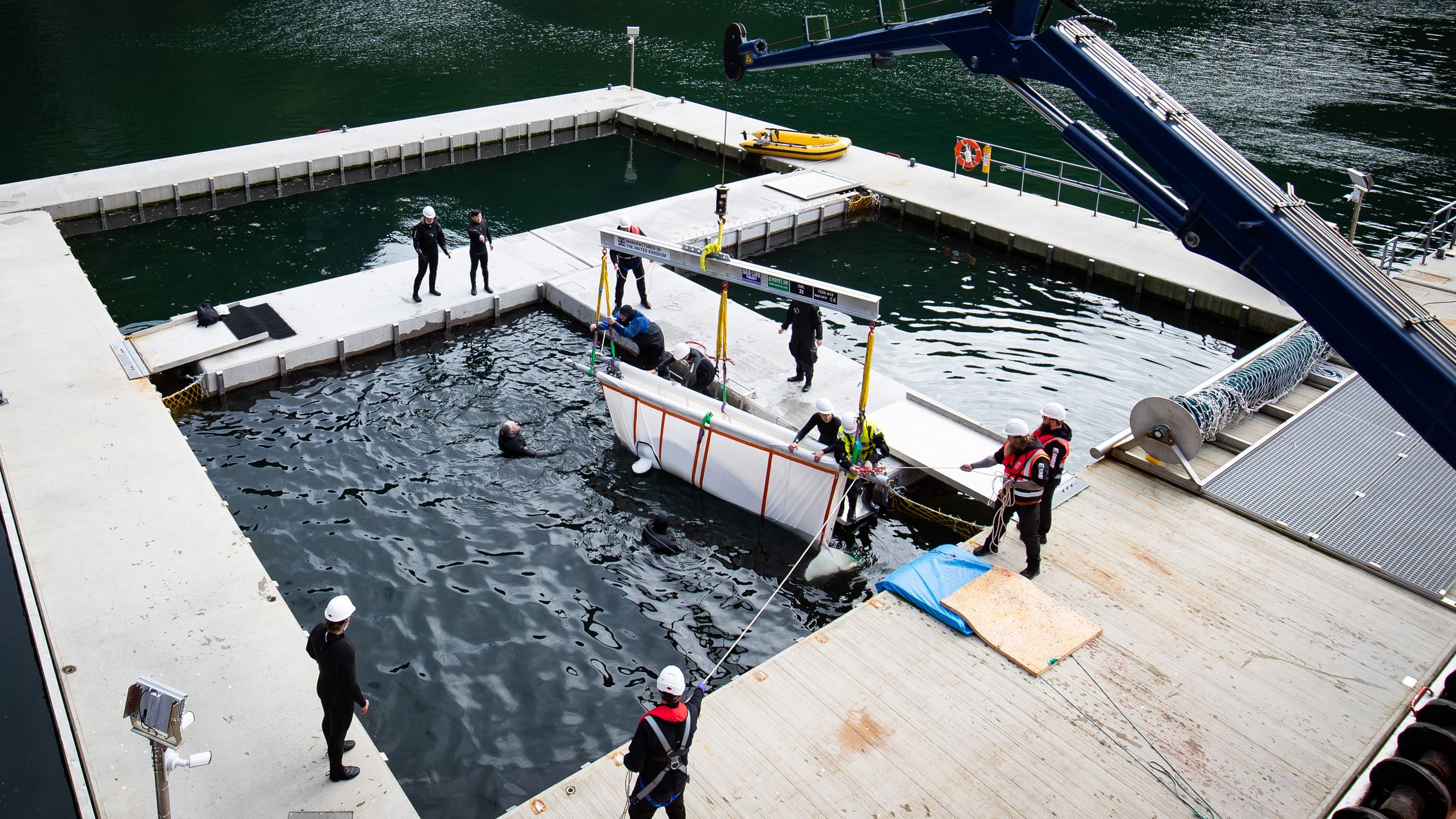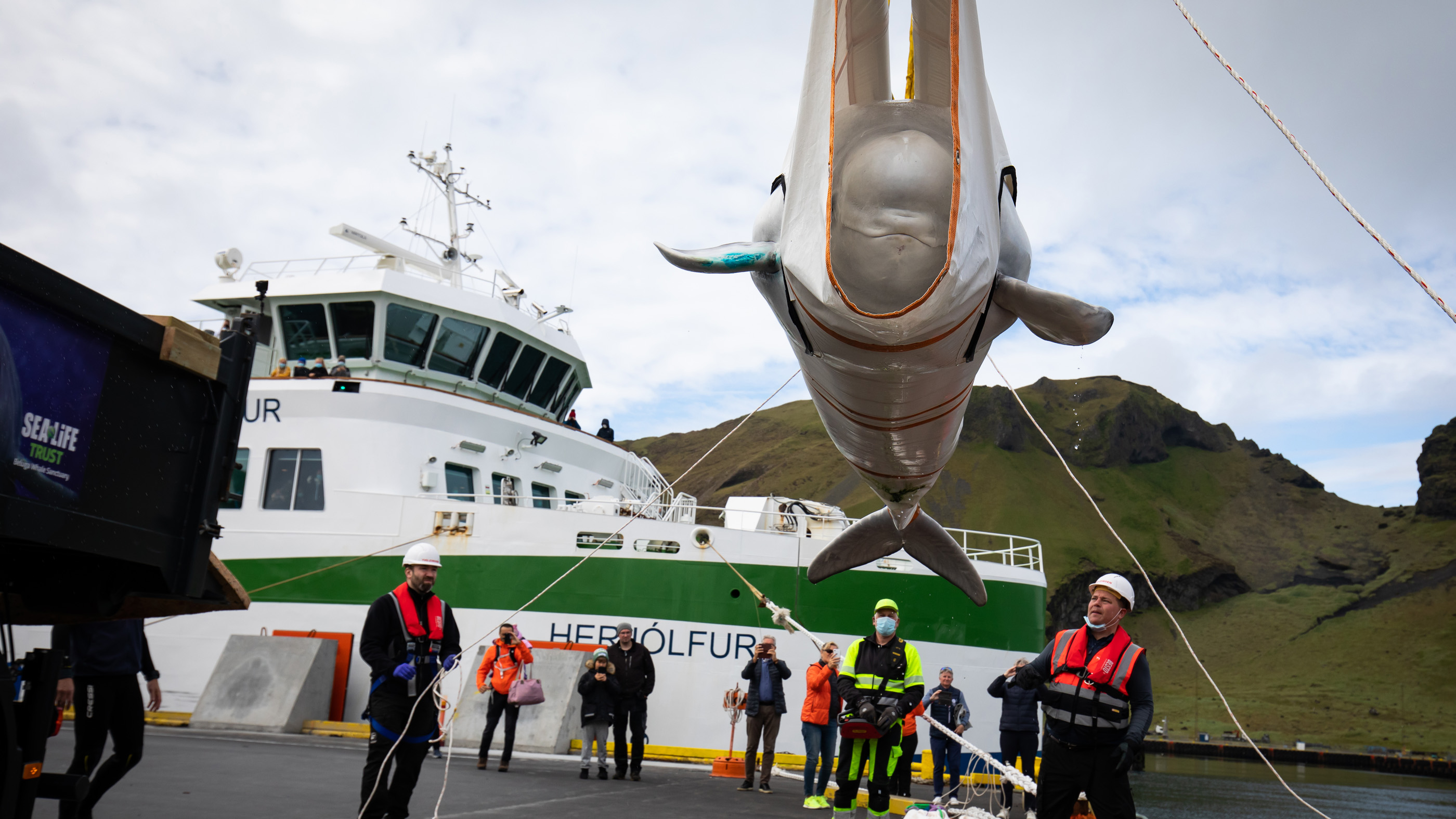2 captive beluga whales finally freed to a seawater sanctuary in Iceland
This is the first time they've felt the sea in more than 10 years.
After a 30-hour journey by land, air and sea, two young beluga whales that were on show in an aquarium in Shanghai for years have now arrived at a new home — a cool seawater sanctuary off the coast of Iceland. This is the first time the cuties have dipped their smiling snouts into the sea in more than a decade.
The belugas, named Little White and Little Grey, have spent the last three days and nights in a netted-off "care pool" within the sanctuary at Klettsvik Bay on the island of Heimaey, in Iceland's southern Vestmannaeyjar archipelago. Because these captive whales couldn't survive in the open ocean, the sanctuary is the next best thing.
The island is home to about 4,000 people in a town about a 10-minute boat ride away, and the belugas will have lots of room to spread out — the sanctuary covers around 344,445 square feet (32,000 square meters) of seawater and is divided from the rest of the bay by netting that runs from the bottom to the surface.
Related: Photos: See the world's cutest sea creatures
The young whales will spend about a month in the pool acclimating to their new environment, said Audrey Padgett, the general manager of the Sea Life Trust's Beluga Whale Sanctuary.
The pool is fitted with underwater gates that the belugas can use to pass into another pool; eventually other underwater gates will be opened so they can explore the entire sanctuary.
So far, the two belugas seem content with their new surroundings, especially Little Grey, who spent some of Monday morning (Aug. 10) investigating a diving seabird — a razorbill — that had flown into the area.
Sign up for the Live Science daily newsletter now
Get the world’s most fascinating discoveries delivered straight to your inbox.
The quieter of the two whales, Little White, was "taking her time, taking everything in," Padgett told Live Science. "They are both eating and interacting with the care staff, so that's a really positive sign."




Beluga sanctuary
The two belugas are the first inhabitants of the new sanctuary at Klettsvik Bay. They are both about 12 years old and are expected to live into their 40s, so the sanctuary could be their home for years to come.
Padgett explained that Little Grey and Little White were captured in Arctic waters on the north coast of Russia when they were about a year old, and then sold to Changfeng Ocean World in Shanghai in China. There they lived in an indoor pool, until a new owner started looking for more natural conditions for them.
Related: Marine marvels: Spectacular photos of sea creatures
This is the first time in more than 10 years that Little Grey and Little White have experienced the sea, she said, but it's taken a lot of work to get them here.
The two whales each weigh about 1,980 pounds (900 kilograms) and so the 6,000-mile (9,600 km) journey to Iceland was a tricky one.
Each was placed inside specially-built transportation tanks that were lifted by a crane and placed on two trucks in Shanghai; they were then transferred to a Cargolux Airlines cargo jet, which flew them to Iceland's Keflavik Airport. From there, they were transferred onto trucks, which then took a ferry to Heimaey Island.
That was in 2019. And since then, the two belugas have lived in a pool at the Beluga Whale Sanctuary's visitor center at Klettsvik Bay, going through quarantine, assessments and acclimating to cooler water temperatures that better suit an Arctic whale species, Padgett said.
Seawater sanctuary
The Klettsvik Bay sanctuary has room for about 10 belugas, but there are no firm plans right now to add more, Padgett said.
"Our focus is still firmly on Little White and Little Grey, and getting them out into the larger sanctuary space," she said. "When [they] are out in that sanctuary, that opens the door for conversations about future belugas that could come and join them."
Roughly 300 belugas are kept in captivity around the world; most of them were raised in captivity and couldn't survive on their own in the open ocean, so a seawater sanctuary with 24-hour human care is their best bet, she said.
Originally published on Live Science.
Tom Metcalfe is a freelance journalist and regular Live Science contributor who is based in London in the United Kingdom. Tom writes mainly about science, space, archaeology, the Earth and the oceans. He has also written for the BBC, NBC News, National Geographic, Scientific American, Air & Space, and many others.









